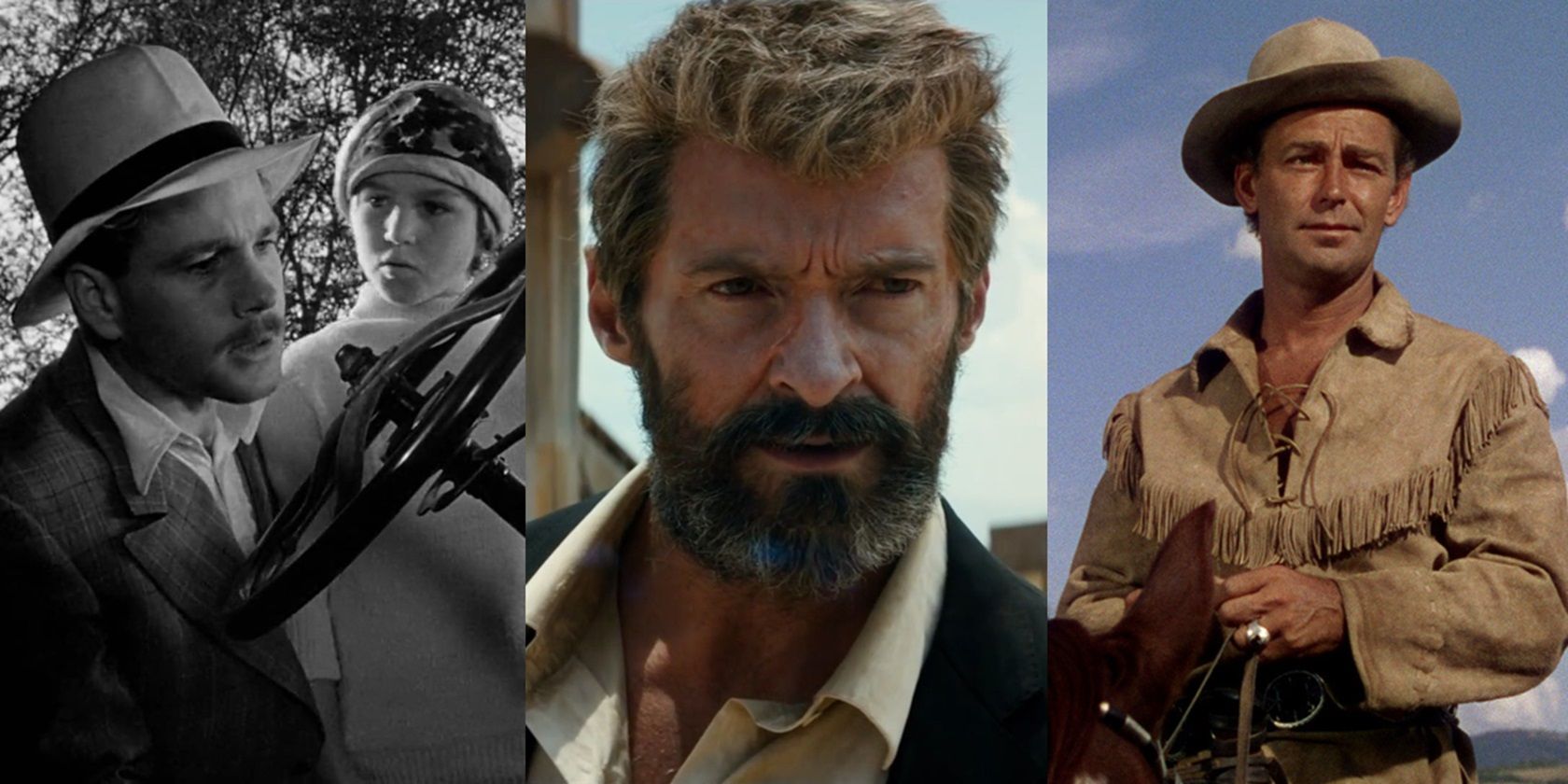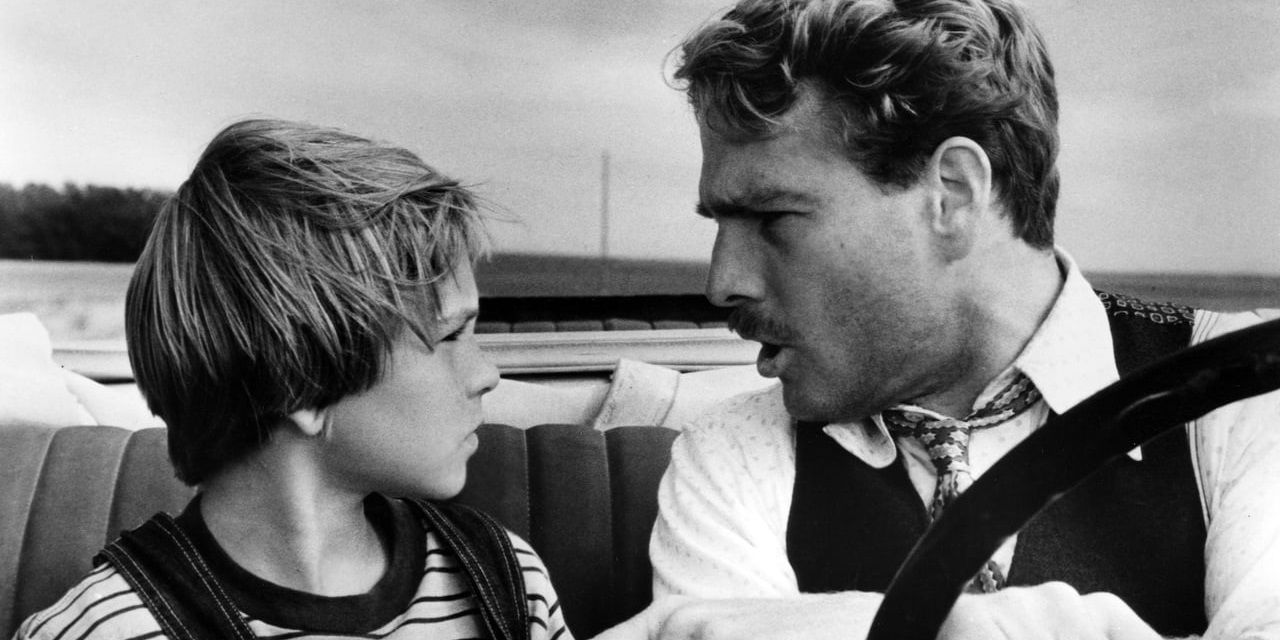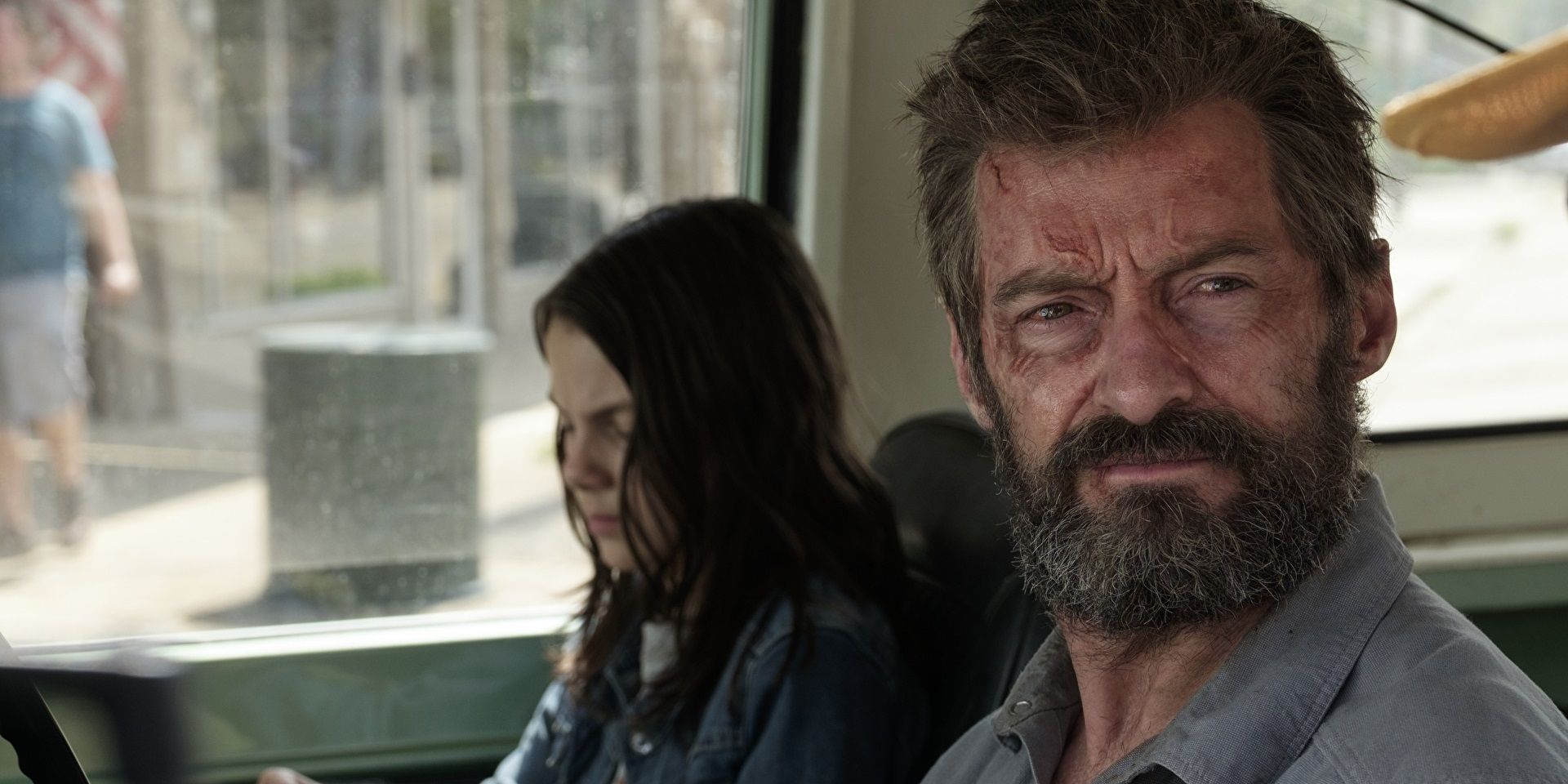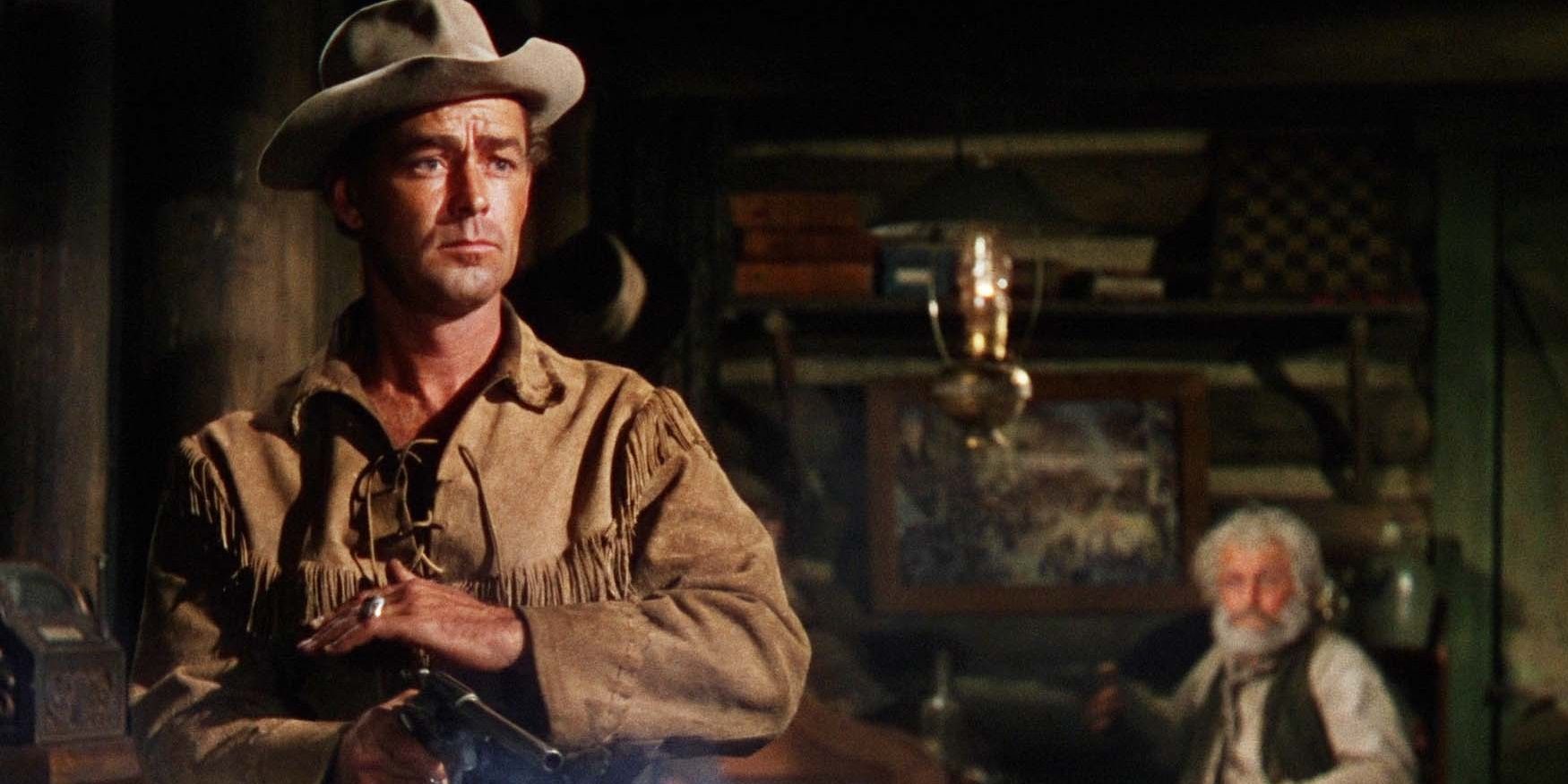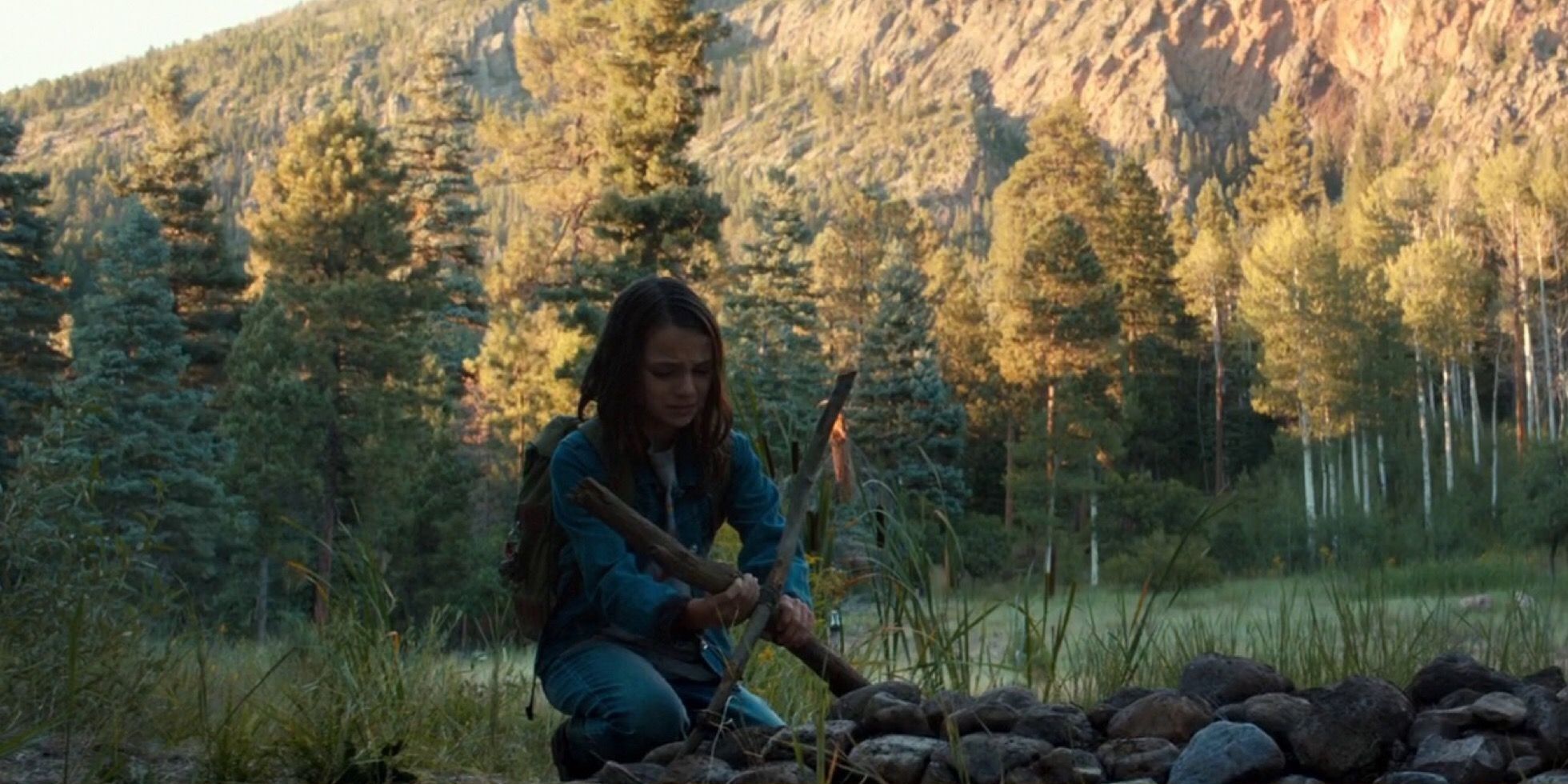After finally being given the freedom of an R-rating, James Mangold was able to give Hugh Jackman’s Wolverine the standalone big-screen treatment he deserved with 2017’s Logan. A deconstruction of the superhero genre’s mythmaking, Logan ended up becoming the first ever Best Adapted Screenplay nominee at the Oscars to have been adapted from superhero comics.
Logan is a lot closer to Martin Scorsese’s definition of “cinema” than the average comic book blockbuster, and it’s precisely because Mangold didn’t look to the comics for inspiration. He instead looked to previous movies. After using Wolvie’s bitter near-future characterization from Mark Millar’s Old Man Logan run as a jumping-off point, Mangold combined the father-daughter road trip story from Paper Moon with the themes of an antihero trying and failing to outrun a violent past from the classic western Shane.
Peter Bogdanovich’s New Hollywood masterpiece Paper Moon follows con man Moze and his possible daughter Addie, played by real-life father-daughter pairing Ryan and Tatum O’Neal, on a road trip across America during the Great Depression. Over the course of their journey, as Addie proves herself to be a pretty competent con artist, the two develop an unlikely bond. At the age of 10, Tatum O’Neal became the youngest recipient in Oscar history with her Best Supporting Actress win for this movie.
Obviously, a father and daughter bonding over selling fake personalized Bibles to widows and stolen whiskey back to the bootleggers they stole it from is very different than a father and daughter bonding over stabbing mercenaries to death with the indestructible claws that extend from their knuckles, but the emotional core of a gruff father figure gradually becoming endeared to his newfound daughter is a common thread between both movies. Paper Moon and Logan both go from the same starting point to the same destination; they just take wildly different routes along the way.
George Stevens’ Shane is hailed as one of the greatest westerns ever made, thanks to Alan Ladd’s captivating performance in the title role, Loyal Griggs’ gorgeous Oscar-winning landscape photography, and most importantly, its razor-sharp themes. Like Logan, Shane is about an aging gunslinger trying to escape from his history of violence. In Shane, the title character runs afoul of the land barons and hired guns threatening his new employers. In Logan, Wolverine is drawn back into superheroics when his long-lost cloned daughter is targeted by a shady organization that wants to experiment on them. In both cases, the characters are reluctant to return to action, but ultimately do the right thing.
The influence of the western genre in general can be seen all over Logan. Like No Country for Old Men and Breaking Bad, it falls under the neo-western category (a classical western set in modern times). The heroes outrun the villains by hopping in front of a speeding cargo train and trapping the bad guys behind it. The only difference between that and a straightforward western is that they’re driving cars instead of riding horses.
But Shane is clearly the movie’s strongest influence from the western canon. Laura and Charles literally watch Shane in their Vegas hotel room halfway through the movie. Alan Ladd’s iconic monologue from Shane’s final scene, which moves both Laura and Charles when they watch the movie, perfectly encapsulates the themes that Mangold recontextualized into Logan: “There’s no living with a killing. There’s no going back from one. Right or wrong, it’s a brand. A brand sticks. There’s no going back.” Much like the eponymous gunslinger at the beginning of Shane, Wolverine goes into Logan with the baggage of decades’ worth of killing, not to mention all the traumatic events of the previous X-Men movies. As the story unfolds, it brings out dark revelations like the adamantium bullet Logan was contemplating taking his own life with.
The ending of Shane leaves Shane’s fate ambiguous. He takes a gunshot to the torso before riding off into the night, but the wound doesn’t seem fatal. It’s more likely that he’ll roll onto the next territory, settle down at another ranch, and eventually be drawn back into action. As the conclusive ending to Hugh Jackman’s record-setting on-screen stint in the role of Wolverine, Logan’s ending is a little more definitive. Wolverine gives his life to ensure the survival of the next generation of mutants. With his dying breath, he encourages Laura not to become the weapon she was created to be.
The tearjerking final scene, in which the young mutants bury Logan in a grave marked with an “X” for a headstone, evokes an earlier scene from Shane, the solemn funeral of a peaceful homesteader who was murdered by Jack Palance’s iconic villain, Wilson. Laura gives a heartfelt eulogy for her father in which she quotes Shane’s closing “There aren’t any more guns in the valley” speech. Mangold takes the poetic words that Shane used to capture the dark unseen flip-side of western gunfighters’ bloodshed and applies it to today’s mythical heroes.
The fact that Logan was heavily inspired by two existing Hollywood classics is reminiscent of another widely acclaimed R-rated comic book movie. Todd Phillips’ Joker was criticized for lifting characters, visuals, plot points, and even Robert De Niro from Martin Scorsese’s Taxi Driver and The King of Comedy. But where Phillips’ movie was a shallow imitation of Scorsese’s aesthetic, Mangold dug a little deeper and borrowed themes and ideas.
Logan doesn’t feel like a re-tread of either Shane or Paper Moon, because Mangold used those two movies (and the Old Man Logan comics) as a springboard to create something profound and unique. In today’s oversaturated superhero movie market, most comic book movies are forgotten within a year, but Logan is here to stay.

